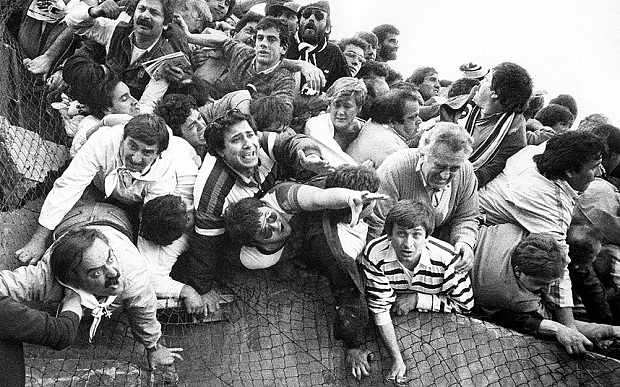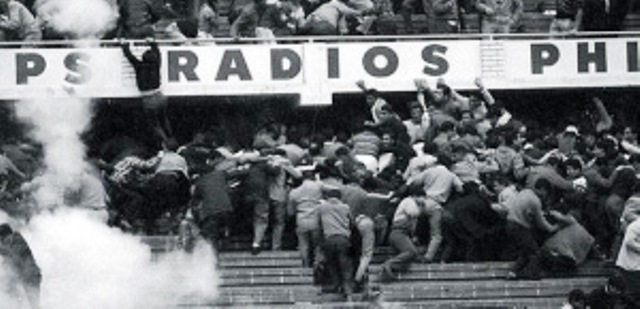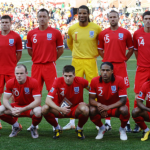It’s never easy to talk about disasters that happen around the world. From fires to floods and even earthquakes which result in numerous deaths and injuries of innocent people, you never know where and when a new disaster will happen. But there is one kind of disasters, that touch me the most; disasters that happen at sports events. In this article, we will check out 5 most tragic disasters in the history of football with no particular order.

Table of Contents
5. Heysel Stadium disaster; May 29th, 1985; Brussels
The Heysel Stadium disaster happened on May 29th, 1985, which was the day of 1985 European Cup Finals between Juventus and Liverpool. It was expected to be a great game, but it soon turned into a nightmare. The stadium itself was in terrible shape even before the start of the match. To put it into a perspective, the walls of the stadium were so fragile, a normal person could kick in the hole. Another thing that led to the disaster was poor organization and separation of fans, who only had a chain fence in-between them, which even by today’s standards is not even remotely enough to prevent riots and fights between the supporters. As expected for a match of that importance, a riot broke out, when Liverpool fans started throwing rocks at Juventus supporters. This resulted in Italians moving away, trying to climb over the wall to avoid fighting Liverpool fans as well as the flying rocks, and then the disaster struck. The fragile stadium wall collapsed under the weight of Juventus fans, resulting in 39 deaths and over 600 injuries.
The recklessness of Liverpool fans resulted in all English clubs banned from European competitions for 5 years, while Liverpool suffered a 6-year ban. In addition, 14 Liverpool fans were convicted of manslaughter.
4. Hillsborough disaster; April 15th, 1989; Sheffield
Hillsborough disaster happened on April 15th, 1989 in a FA Cup semi-final match between Liverpool and Nottingham Forest at Hillsborough Stadium in Sheffield. The whole disaster was a result of overcrowding, which saw almost 100 people die and many more injured. It was also a disaster which threw a shadow on the Liverpool team which remained there for over 20 years.
The semi-finals of the FA Cup were to be played on a neutral venue, and the Hillsborough stadium was selected to be the place where Liverpool and Nottingham were to face off against each other. Much like in other disasters, the main factor here was as well the outdated stadium. The problem started with thousands of people wanting to get into the stadium. What sped the things up were the open exit gates which allowed better flow of fans into the stadium, however, no policeman was assigned to watch the said exit, which resulted in overcrowding the already full stadium. Under the weight, the 2 standing-only central pens, which were allocated to Liverpool supporters fell and crushed over 1000 people.
The disaster resulted in 96 people dying and 766 injured.
It was reported by authorities that it was Liverpool fans fault for the disaster as they refused to follow orders. The blame went even so far that it was said Liverpool fans pickpocketed the dead, however, a later study made in 2014 about the Hillsborough disaster disproved the claims and concluded that it was the lack of police control and poor organization that led to the disaster.
3. Bradford City stadium fire; May 11th, 1985; Bradford
The Bradford City stadium fire occurred during an English League third division match between Bradford City and Lincoln City on May 11th 1985 at Valley Parade ground, which was the home ground of Bradford played for over 80 years. The problematic part of the stadium was the main stand, which had many issues. From being outdated to wooden roof and holes in the stands, which meant litter easily fell through and accumulated under the stand. Those issues were pointed out several times before, but no actions were taken to fix it. With all the garbage under the seats, a simple spark could easily lit it all, which is just what happened on May 11th. The match between Bradford and Lincoln City started as expected and it all went smoothly until the half time mark when some smoke was seen coming from the stands. At first, it did not seem like a huge danger, but the wind did its part and the flames engulfed the whole stand within only a few minutes, leaving some people trapped in their seats, while others managed to save their lives. The locked doors and closed escape paths did not do them any good, which ultimately meant over 50 people were left to burn to death. The fire spread so quickly, even the fire brigade who arrived 7 minutes after the smoke was too late. In total 56 people died and 265 were injured on that day. Even after 34 years, the Bradford City stadium fire remains the biggest fire disaster in British football.

2. Estadio Nacional disaster; May 24th, 1964; Lima
To date, the Estadio Nacional disaster is known as the worst disaster in association football history. It all happened on May 24th 1964, when Peru hosted Argentina in the qualifying round of the Tokyo Olympics football tournament at the Estadio Nacional in Lima. This was a crucial game for Peru to win, who held the 2nd spot in the CONMEBOL table and were to face Brazil in the next and final game. Due to the importance of the match over 50.000 fans attended the event in hopes to see their team win. As you might have expected the stadium was filled to its last spot, which is a recipe for disaster on its own, but the cause of Estadio Nacional disaster was arguably just 1 man who started a riot.
With only 6 minutes left in the match, and Argentina a goal ahead, Peru scored a goal, which was disallowed by Uruguayan referee Ángel Eduardo Pazos. This, as expected, infuriated the home fans. One of Peru fans ran on the field, but was soon caught by police and brutally beaten up. That only poured more oil on already fuming Peruvian fire, which resulted in a riot, to which police responded with tear gas grenades. Supporters ran to the “gates” to escape; however, the stadium did not have gates but rather solid steel shutters, which were closed like they always were during any game. But due to the panic, fans did not realize that, as they continued to run towards the shutters pushing the crowds in the lead down the stairwells. Due to all the pressure shutters finally, burst open, revealing dead supporters who died from being crushed under the weight of other fans. Officially most of them died of internal hemorrhaging and asphyxia.
An official number of deaths is 328, however, this is just an estimate. In addition, 500 were injured in the incident.

1. Port Said Stadium riot; February 1st 2012; Port Said
On February 1st 2012, a match between Al-Ahly and Al-Masry took place in Port Said stadium as a part of the Egyptian Premier League football match.
The whole incident started even before the match, as the kick-off had to be delayed for 30 minutes due to Al-Masry fans refusing to leave the pitch. Even during the match and at half time, Al-Masry fans stormed the pitch, after each goal scored by their team, which only further delayed the match that had its kick-off delayed for 30 minutes to start with.
It was only after the final whistle that Al-Masry fans started a riot. Armed with stones, knives, fireworks and bottles, they attacked the Al-Ahly players who fled to their changing rooms under police protection. After the players’ fleed, Al-Masry fans attacked the Al-Ahly supporters in what is now known as Port Said Stadium riot. Outnumbered 12:1, Al-Ahly fans tried to flee, but the closed doors prevented them from doing so. The riot ended with the death of 72 Al-Ahly fans, a police officer and 1 Al-Masry fan in addition to over 500 injuries. The riot resulted with at least 470 Al-Masry fans being arrested and 73 ending up facing trial. This is now known as one of the biggest football disasters of the 21st century and hopefully, it will remain as the biggest.
From bad organization, bad infrastructure and even actions of supporters/fans, we can never predict what will cause the next disaster. But with improvement in security, better-designed stadiums and overall more careful planning of important events, we can safely say, disasters in sports events have been reduced drastically and will hopefully one day be reduced to a minimum. But as with any disaster, you never know when and how it will happen.

Sports journalist, content writer and passionate football lover.








